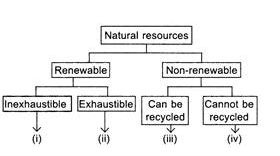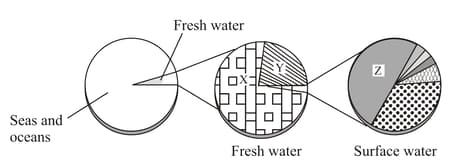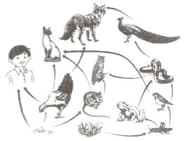Anil Ahlawat Solutions for Chapter: Natural Resources and their Conservation, Exercise 1: EXERCISES
Anil Ahlawat Science Solutions for Exercise - Anil Ahlawat Solutions for Chapter: Natural Resources and their Conservation, Exercise 1: EXERCISES
Attempt the free practice questions on Chapter 8: Natural Resources and their Conservation, Exercise 1: EXERCISES with hints and solutions to strengthen your understanding. NSO Science Olympiad Workbook Grade 7 solutions are prepared by Experienced Embibe Experts.
Questions from Anil Ahlawat Solutions for Chapter: Natural Resources and their Conservation, Exercise 1: EXERCISES with Hints & Solutions
The steps of the wastewater treatment plant are given randomly.
(i) Wastewater is passed into a sedimentation tank.
(ii) Sludge is decomposed by anaerobic bacteria.
(iii) Wastewater is passed through bar screens.
(iv) Wastewater is passed to grit and sand removal tank.
(v) Solids settle at the bottom and floatable materials are removed by a skimmer.
(vi) Aeration of water takes place.
(vii) Disinfection of water by adding chlorine.
Which of the following represents the correct sequence of steps?
A large area of forest was cleared by burning. Which of the following statements is/are correct regarding the consequences of this activity?
(i) Increase in soil erosion as the soil is directly exposed to wind and rain.
(ii) The land will have more fresh air as there are lesser trees to take in oxygen.
(iii) Wildlife will easily thrive in the cleared area because more space is available now.
(iv) New trees will grow faster and replace the burnt forest soon as the ash of the burnt trees will make the soil more fertile.
Mr Khanna had a pond in his garden, filled with all kinds of aquatic plants. He wanted to prevent mosquitoes from breeding in the pond without harming the plants in any way. He could _____.
(i) Add salt into the water
(ii) Add some goldfish into the pond
(iii) Spray a film of oil on the surface of the pond
Read the given data and select the correct option for the following questions.
Raman carried out an experiment to find out how fast water can pass through four different types of soil. He puts each type of soil in four pots with equal sized holes at the base and placed separate dishes at their bottom to collect water. He poured water in them one by one, and used a stopwatch to record the time taken for water to reach a certain level in each dish. His recording is given in the table as shown below.
| Type of soil | ||||
| Time (in second) |
Which soil is the most suitable for a plant that thrives in wet and clayey soil?
Read the given data and select the correct option for the following questions.
Raman experimented to find out how fast water can pass through four different types of soil. He puts each type of soil in four pots with equal-sized holes at the base and places separate dishes at their bottom to collect water. He poured water in them one by one and used a stopwatch to record the time taken for water to reach a certain level in each dish. His recording is given in the table as shown below.
| Type of soil | ||||
| Time (in second) |
What factors should Raman keep the same to ensure a fair test?
(i) The amount of soil
(ii) The size of the pot
(iii) The shape of the dish
(iv) The amount of water
Refer to the given flow chart and identify (i), (ii), (iii) and (iv).

| (i) | (ii) | (iii) | (iv) | |
| (A) | Groundwater | Forest | Metal | Fossil fuel |
| (B) | Water | Forest | Metal | Fossil fuel |
| (C) | Water | Fossil fuel | Plastic | Forest |
| (D) | Groundwater | Fossil fuel | Metal | Forest |
Refer to the given diagrammatic representation of the distribution of water on Earth and select the correct statements for and .

(i) is a persistent body of dense ice that is constantly moving under its own weight.
(ii) is found below the water table and rainwater is its main source.
(iii) is an important source of water to the perennial rivers.
Which of the following will happen if the population of snakes is increased in the given food web?

